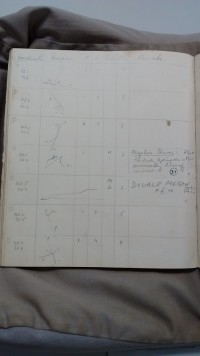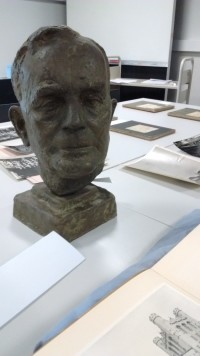By Matin Durrani
I spent yesterday at the University of Bristol, where a meeting was held to celebrate the 70th anniversary of the discovery of the pion in 1947.
The particle was spotted by Cecil Powell, who joined the university’s physics department in 1928 and went on to win the 1950 Nobel Prize for Physics for his efforts.
At the time, the pion was thought to be the carrier of the strong nuclear force, which binds protons and neutrons in the nucleus, though we now know it is one of a family of strongly interacting mesons.
As we heard yesterday from introductory speaker Brian Pollard, Powell found evidence for the pion using a series of ingenious (and literally breathtaking) experiments that involved him taking specially manufactured photographic plates to high altitudes up the Pic-du-Midi mountain in the Pyrenees.
Like other charged particles, mesons (produced by cosmic rays hitting the atmosphere) scatter from electrons and nuclei in the photographic emulsion, leaving distinctive tracks in the processed emulsion plates.
On 7 March 1947, one of Powell’s assistants (known as “scanners”) identified an event that showed one slow-moving meson stopping and then emitting a second meson. The following day another was seen, indicating that in both cases a heavier, primary meson had decayed into a secondary, lighter meson and a neutral particle.

Historical moment – Marietta Kurz’s notebook showing the discovery of the pi-meson. (Courtesy: University of Bristol Special Collections)
Powell was the intellectual and practical driving force behind the experiment, but it was fascinating for me during the lunch break to visit the University of Bristol’s arts and social sciences library, where a small exhibition related to Powell’s work was on display.
There, among the bust of Powell and photos of him receiving his Nobel prize in Stockholm, was the very notebook containing details of that first event on 8 March.
The book was the property of Miss Marietta Kurz, one of the scanners who would pore over photographic plates and bring potentially interesting events to the attention of physicists in Powell’s group.
Kurz, like the other scanners, wast not a trained scientist, but to look at her book one wonders where her undoubted experimental skills would have taken her had she benefited from physics training.
As I was examining her notebook, a small party of four other delegates entered the room, including Pollard as well as the physicist and writer Frank Close, who is currently writing a book on one of Powell’s colleagues – Klaus Fuchs, who was later unveiled as a Soviet spy.
The other two visitors turned out to be none other than Powell’s daughters Jane Panahy and Annie Hatt, who spoke to me with obvious fondness about their father.
Both women also recalled their father winning his Nobel prize and how they had to stay at home in December 1950 when he went to pick up his award – the rules stating that each winner could invite just two guests (Powell took his wife and sister).
It was a poignant moment, especially when his daughters spoke of the sadness they had felt when their father died after suffering a heart attack while out walking in the hills above Lake Como in Italy. Powell died eight days after his retirement, aged just 65.

Guidelines
Show/hide formatting guidelines
this text was deletedwhere people live in harmony with nature and animals</q>
Some text